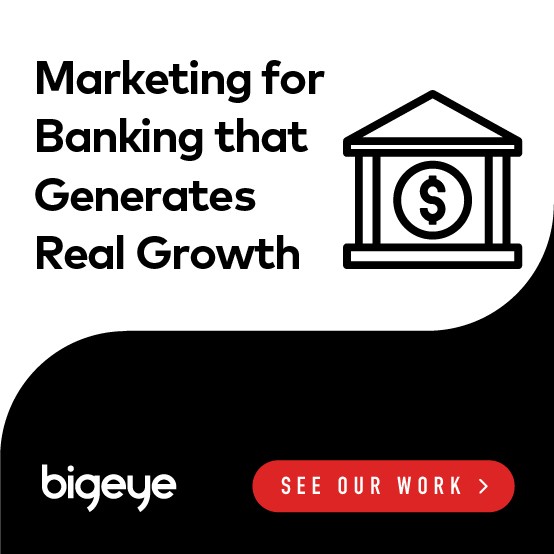
While credit unions are almost universally admired, many consumers are still unclear on their benefits. Here’s what credit union marketers need to know.
Credit union marketing comes with a significant built-in advantage: Most consumers are predisposed to like and trust credit unions. This, in turn, means they are primed for smart marketing and advertising messages.
Let’s take a closer look at some of the most effective strategies credit union marketers can use to connect with audiences.
Hammer Home the Core Credit Union Value Proposition
Credit unions are (correctly) perceived as less commercial than banks. This makes them inherently more trustworthy in the eyes of consumers. Credit unions, by virtue of their design, also offer consumers a range of benefits that most banks can’t match (cost, accessibility, etc.). This is an incredibly strong value proposition for most people.
Credit union marketing campaigns should therefore place a strong emphasis on the distinction between banks and credit unions and the many advantages consumers receive by opting for the latter.
Help Consumers Break Free from Inertia
Marketers should also consider the reasons why people don’t automatically opt for a credit union, even given the benefits involved. In many cases, the answer is simple inertia.
Let’s be frank: Inertia and procrastination are powerful forces. Most of us have to power through our natural inclination to put things off, or maintain the status quo. Bank consumers are no different — and that’s why smart credit union marketers design campaigns with this in mind.
Think about how you can incentivize bank consumers to make the switch, whether it’s by using special limited time offers or creating an easier way to sign up.
Don’t Let Banks Win on Technology
Credit unions own roughly 14% of the Baby Boomer demographic and are doing almost as well with Generation X. However, credit unions are lagging with millennials and members of Gen Z.
Why? Part of it is attributable to technology. Banks are farther ahead on the digitalization curve, and younger consumers demand digital-first solutions. In order to stay competitive, credit unions need to target younger consumers.
This means staying competitive in terms of technology, and using credit union marketing and advertising campaigns to raise awareness of these efforts.
Credit unions are largely viewed as trustworthy and a good deal for consumers, yet they are also sometimes perceived as less than cutting edge. Marketers need to do their part to counteract this perception of stodginess and slow innovation.
Segment Your Audience and Reach Them with Targeted Messages
We just covered younger consumers and technology — now it’s time to talk about older consumers and their desires. By using market research, demographic profiling, and programmatic advertising tools, credit union marketers can segment their audiences and reach them with highly targeted and relevant messages.
In the case of the credit union’s most loyal consumer category (Baby Boomers), these messages should be calibrated to focus on the aspects of the credit union model that most appeal to them: Namely, cost and accessibility.
Studies have shown that older credit union members visit their branches much more frequently than bank consumers do. In an era where banks are relentlessly automating and scaling back the human touch, credit union marketers can draw a powerful distinction between that approach and their own more accessible, community-minded model.
The Takeaway
Credit unions have a powerful value proposition that banks can’t match. Yet they also have their own challenges, particularly with younger consumers. By following the strategies outlined above, credit union marketers can create well-executed strategies that help convince consumers to make a change, or become even more loyal.
At BIGEYE, we specialize in forward-thinking, tech-enabled credit union marketing campaigns. Contact us today to learn more about what our marketing strategies can do for your credit union.



